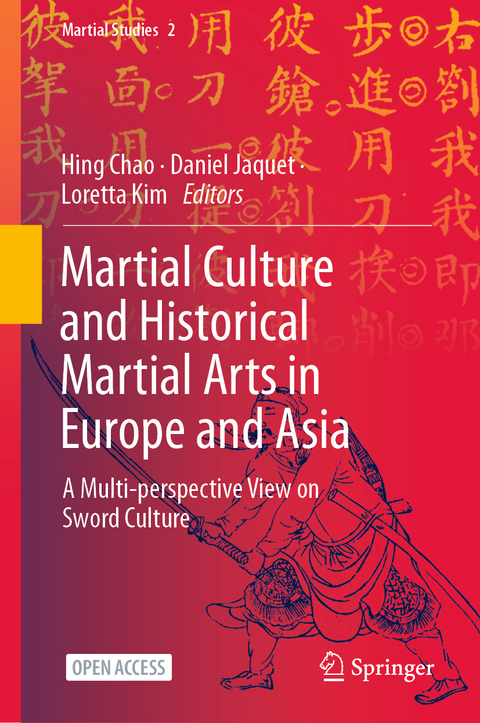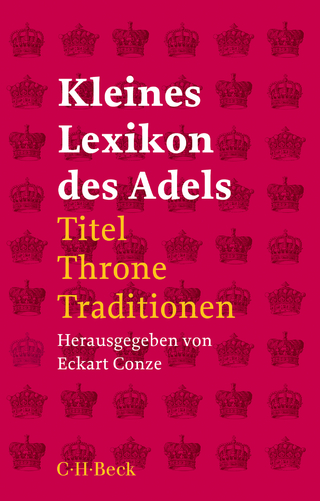
Martial Culture and Historical Martial Arts in Europe and Asia
Springer Verlag, Singapore
978-981-19-2036-3 (ISBN)
The cross-cultural and interdisciplinary significance of this book cannot be overemphasized. Whereas a number of contributors are internationally recognized and, indeed, leading authorities in their respective fields; for example, Jeffrey Shaw has been a world-leading new media artist and scholar since the 1970s, while Ma Mingda is a well-known historian and the contemporary founder of Chinese martial studies; and while there are significant overlaps in their research interests, this book brings their research within a single volume for the first time. Equally significant, the book is structured in such a way to reflect the various core aspects of martial studies, particularly in relation to the study of historic sword culture, including history, culture, philosophy, literature and knowledge transmission, material culture, as well as the technical aspects of historical fencing.
As one of the first titles on martial studies, this book becomes a reference not only for scholars taking an interest in this subject, but also for historians; scholars with interest in Chinese and/or Italian history (particularly of the Medieval or early modern periods), the history of international relations in Asia / Far East; anthropologists; scholars of martial (arts) studies and researchers in sword-making and/or historic metallurgy.
Hing Chao is the Founder and Executive Director of Institute of Martial Studies, Executive Director of International Guoshu Association, and Trustee of Hong Kong Maritime Museum. He is a co-founder of the International Martial Studies Conference and Hong Kong Martial Arts Living Archive, the largest 3D martial arts archive in the world, and has curated and produced several pioneering exhibitions including Way of the Sword: Warrior Cultures in China and Italy (Tai Kwun, Hong Kong: 2021), Kung Fu Motion (EPFL, Lausanne: 2018), and 300 Years of Hakka Kung Fu: Digital Vision of Its Legacy and Future (Hong Kong Heritage Museum: 2016, Victoria Museum of Immigration, Melbourne: 2017). Daniel Jaquet is Senior Researcher at the University of Bern. He has dedicated his career to exploring martial arts studies in the classroom, the archive, and the museum. As a scholar and a practitioner, his interdisciplinary work has pioneered the field of European martial arts studies, bringing together research on martial culture, production and circulation of embodied knowledge, and material culture. He holds a Ph.D. in Medieval History, with a thesis on armored fighting practices in the late Middle Ages and early modern period (University of Geneva, 2013). He is the Founder and Editor of the journal Acta Periodica Duellatorum (ISSN 2064-0404), which is dedicated to the field of European martial arts studies, since 2013. Loretta Kim is associate professor and director of the China Studies programme at the School of Modern Languages and Cultures, University of Hong Kong. She is a historian of late imperial and modern China. Her primary research areas include the comparative history of borderlands and frontiers, Sino-Russian cultural relations, and Chinese ethnic minority languages and literatures. She is the author of Ethnic Chrysalis: China’s Orochen People and the Legacy of Qing Borderland Administration (Harvard Asia Center, 2019).
Part 1 : Sword Culture from Socio-historic Perspectives.- Chapter 1 - Stratification in Italian Martial Culture (Roberto Gotti & Enrico Valseriati).- Chapter 2 - Development of the Yanlingdao from the Yuan to Qing dynasty (Gong Jian).- Chapter 3 - Daniel Jaquet, The Rise of the Two-Handed Sword in the Age of Staff-Weapons.- Chapter 4 - Ma Lianzhen, The Origin of the Two-Handed Sword in China.- Part 2: Fight Books: the Transmission and Interpretation of Knowledge.- Chapter 5 - Omar Ma, Ming Dynasty Chinese Fencing Treatises.- Chapter 6 - Miriam Vogelaar, Fabris’s 1606 Fencing Manual: an Analytical Bibliographical Study.- Chapter 7 - Manuel Valle Ortiz, The Ferrara Manuscript: Destreza and Vulgar.- Part 3: Material Culture: Weapons, Technology, & Aesthetics.- Chapter 8 - Hu Xiaojun, Rediscovering Swordmaking Techniques of Ancient China: Insights from Reconstructing a Han-Dynasty Ring-Pommel Dao.- Chapter 9 - Gabriele Tonelli, Historical Sword-making Techniques in Northern Italy in the XVI and XVII Centuries.- part 4 : Classical Martial Art Traditions.- Chapter 10 - Ma Lianzhen, Duanbing and the History of Fencing in China.- Chapter 11 - Jacopo Penso, Interpreting Achille Marozzo’s System of Sword-fighting: A Contemporary Case Study.- Chapter 12 - Axel Pettersson, Applying Pedagogic Methods in Historic European Martial Arts.
| Erscheinungsdatum | 20.12.2022 |
|---|---|
| Reihe/Serie | Martial Studies ; 2 |
| Zusatzinfo | 230 Illustrations, color; 37 Illustrations, black and white; XXII, 381 p. 267 illus., 230 illus. in color. |
| Verlagsort | Singapore |
| Sprache | englisch |
| Maße | 155 x 235 mm |
| Themenwelt | Sachbuch/Ratgeber ► Sport ► Kampfsport / Selbstverteidigung |
| Geschichte ► Teilgebiete der Geschichte ► Kulturgeschichte | |
| Geisteswissenschaften ► Sprach- / Literaturwissenschaft ► Anglistik / Amerikanistik | |
| Geisteswissenschaften ► Sprach- / Literaturwissenschaft ► Literaturwissenschaft | |
| Sozialwissenschaften ► Ethnologie | |
| Sozialwissenschaften ► Soziologie | |
| Schlagworte | Historical martial arts • Martial Arts Studies • Martial Studies • open access • Sword culture • Sword-making |
| ISBN-10 | 981-19-2036-2 / 9811920362 |
| ISBN-13 | 978-981-19-2036-3 / 9789811920363 |
| Zustand | Neuware |
| Haben Sie eine Frage zum Produkt? |
aus dem Bereich


